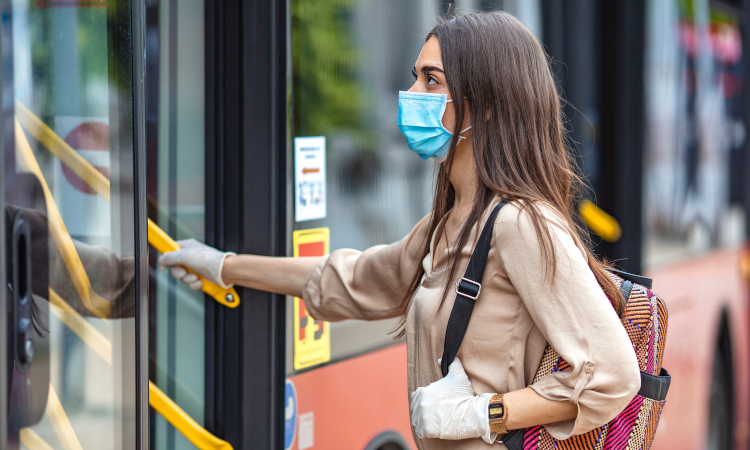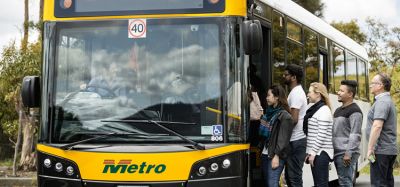How COVID has opened a new chapter for public transportation
- Like
- Digg
- Del
- Tumblr
- VKontakte
- Buffer
- Love This
- Odnoklassniki
- Meneame
- Blogger
- Amazon
- Yahoo Mail
- Gmail
- AOL
- Newsvine
- HackerNews
- Evernote
- MySpace
- Mail.ru
- Viadeo
- Line
- Comments
- Yummly
- SMS
- Viber
- Telegram
- Subscribe
- Skype
- Facebook Messenger
- Kakao
- LiveJournal
- Yammer
- Edgar
- Fintel
- Mix
- Instapaper
- Copy Link
Posted: 9 December 2020 | Cityway SAS | No comments yet
On-demand services are transforming public transport and making it more equitable for the masses. Here, Laurent Briant, CEO of Cityway, explains its role in pandemic mobility and how these more flexible services can pave the way to sectoral recovery for public transport providers.


Beyond COVID-19, on-demand transportation is an effective gateway to a global mobility policy. On-demand services make it possible to serve low-density areas or offer off-peak services at lower cost, thanks to digital technology and algorithms that optimise routes and passenger capacity in real time.
MaaS is becoming reality
MaaS is no longer a myth – it is a reality”
While current circumstances might lead people to seek a safer transport offer by using their private car, they are also noticeably receptive to the use of other modes.
The first of these modes is bespoke services such as transportation on demand. Passengers appreciate their flexibility, and although shuttle buses mean travelling with other people, vehicle capacities can be dynamically adjusted to meet authorities’ regulation on social distancing on-board1.
A survey we conducted in April 2020 revealed that 90 per cent of our app users were satisfied with the service as it is convenient, simple to use and flexible2.
This finding applies more specifically to two segments of the population: primarily, the under-30 age group, who seek independence in their mobility and are receptive to the app (e.g. students without a driver’s license or non-car owners). Secondly, in the 30-60 age range, part-time or shift workers, some without their own means of transport, or parents of teenagers with transportation needs. For people without a computer, the app is also an asset.
In Le Havre, the largest port in France3, we helped our client reduced mileage travelled by 30 per cent, while doubling the number of passengers and timetable services. The app helps push passengers towards public transit services by providing them with real-time information about the connecting services available. In the suburban and rural areas of the region (Etretat-Normandy, France), the Web&App solution led to 72 per cent of on-demand rides being booked digitally, compared with 100 per cent previously booked through a call centre.
This period is also conducive to the development of other micromobility services such as bicycles and scooters, where the traveller may be a “single occupant”, but uses a non-congesting, non-polluting means of transportation (compared with the private car). We are observing a slight increase in modal shift towards these modes on our MaaS apps for metropolitan regions. Only three weeks after the launch of Moovizy2 in September 2020 for the Greater Saint-Etienne Authority, 800 unique clicks had been recorded on the link “how to rent a bike” link4.
At the same time, our MaaS apps recorded a high rate of public transit use: 1,600 mobile ticket purchases in three weeks were recorded following the launch of Moovizy2, used as part of intermodal journeys. In the city of Mulhouse’s Mobility Account, 60 per cent of passengers use two, three or four different modes to get around, and car-sharing increased by 50 per cent over the year.
Solving the first- and last-mile problem and activating intermodal travel helps to improve the use of public transportation in places where passengers, for reasons of convenience or lack of knowledge, would otherwise use their private car.
MaaS is no longer a myth – it is a reality. We now know that micromobility solutions – including on-demand transport – are key ingredients in supporting the use of public transit.
Regaining public trust
The pandemic has dealt a blow to public transportation but has triggered debate around how to adapt services to new mobility patterns.
COVID-19 impacted public transport during the first wave of the epidemic, causing ridership to plummet due to both the government-imposed lockdown and travellers’ fears of crowded environments where the virus can easily be transmitted.
Transport providers quickly implemented measures to reassure passengers on the health and safety aspect. Some operators were quick to introduce contactless payment and validation solutions to reassure passengers and prevent infection.
The issue of crowding was more delicate to address. We were already in discussions and collaborating on innovation with our partner Flowly5. We ramped up these projects by creating and developing a new key indicator that our clients could monitor: vehicle crowding.
At first, this showed them that traveller behaviour had changed with COVID-19. Due to part-time homeworking and the fear of crowded environments, the morning and evening travel peaks were less extreme, resulting in ridership being more evenly distributed through the day6. Our clients could then, working from real-time data, consider how to adapt their services in response to these changes in behaviour.
They were then able to use this new indicator to offer their passengers information about real-time vehicle occupancy in a very simple way: a green symbol when the vehicle is not crowded, an orange symbol when it is full, and a red symbol when it is crowded.
This has a dual benefit: on the one hand, it gives travellers the chance to choose the least crowded routes, which is reassuring for them during the outbreak; on the other, it also allows more vulnerable travellers (e.g. the elderly, pregnant women, people with reduced mobility) to identify routes with a green symbol on which where they will be certain to get a seat for their journey.
In response to the temptation to revert to the ‘safe’ private car, and in response to the mistrust of public transport, transit agencies can now offer an app systematically proposing intermodal journeys and integrating all modes – in particular parking and on-demand transport – combined with information on crowding, nearby services, and the real-time availability, while also allowing travellers to buy and use all these services in one click. This offers passengers better conditions for their mobility experience, while encouraging them to vary the transportation services they use.
The aim is to be as comprehensive as possible for users, however they get around. Cityway wants to be the go-to solution in their pocket. By concentrating everything in one application, we reduce the effort that the passenger is required to make, and we encourage them to modify their travelling habits.
In the future, how will MaaS and CaaS (City as a Service) talk to one another?”
In the Aix-Marseille metropolitan area, there are nearly 90 transport providers, and there are even more in the Île-de-France region. It is unthinkable to have that many separate accounts to get around your city. This dispersion is an obstacle to mobility. The system needs to be simplified to satisfy the passenger’s primary need, which is to get from A to B. MaaS is an additional channel that we wish to create, an opportunity to build tomorrow’s mobility together, through a simple and efficient one-stop shop for travellers.7
In the future, how will MaaS and CaaS (City as a Service) talk to one another?
The term CaaS reflects this need to create an ecosystem around MaaS. We are interested in offering our APIs to address first- and last-mile goods delivery issues. We are also keen to partner with companies; in Amsterdam-Zuidas, where we are part of the MaaS project, the government is orienting its projects towards companies because Zuidas is a very important business district in the city. CaaS is a huge programme where we believe that local authorities should be in the driver’s seat, leading a group of stakeholders towards mobility for all.
Footnotes
1. Our Manett Solution provides key features to inform travelers on crowding levels in vehicles; and On-Demand services management to respect social distancing on Transit On-Demand fleets ; for guaranteed travel conditions.
2. MV2 customer experience research institute, survey conducted among passengers aged 15 and over, living in municipalities with fewer than 300,000 inhabitants and users of transportation on demand.
3. Le Havre is the largest port in France. It has a vast industrial zone which accommodates 200 companies and spans 20 km. Previously, the area was difficult to reach by public transportation, leading to 99% of trips happening by car.
4. In the space of three weeks, we registered more than 7,000 new accounts, a figure in line with our targets in spite of the health crisis.
5. Using patented mobility analysis technology, Flowly enables users to accurately and continuously monitor mobility flows in a given perimeter.
6. For example, the Reims metropolitan area in France.
7. To achieve this, one substantial challenge is standardisation, meaning that each part of the system can communicate with the others. We are strongly committed to this subject, whether the issues are global (TOMP-API in the Netherlands), cross-border (EU Spirit, LinkingAlps) or local.
CLICK HERE FOR MORE INFORMATION
Related topics
COVID-19, Ticketing & Payments
Related organisations
Cityway SAS
Related people
Laurent Briant








